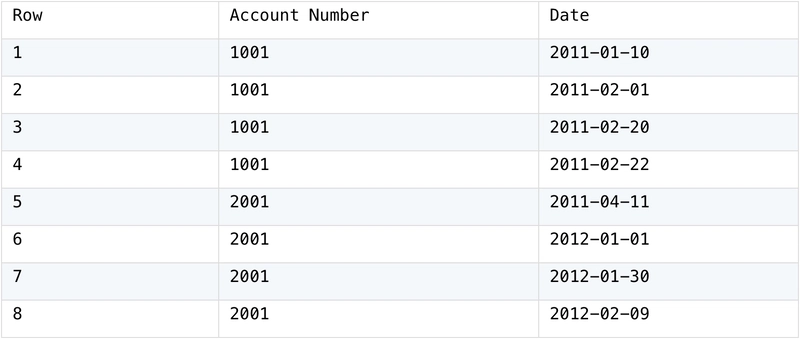Linux User Management Basics
Linux User Management Basics: A Beginner's Guide If you're using Linux, knowing how to manage users is super important, especially if you're running a server or sharing your system with others. It helps you keep things organized and secure. Let’s go over the basics of handling users in Linux! 1. Creating a New User Adding a new user is easy! If you're on Ubuntu/Debian, use this: sudo adduser username This sets up a new user with a home directory and some basic settings. For other Linux versions, try: sudo useradd -m username The -m flag makes sure the home directory is created. 2. Setting and Changing User Passwords After adding a user, they’ll need a password: sudo passwd username If you need to change your own password: passwd 3. Deleting a User To remove a user but keep their files: sudo deluser username If you want to remove the user and their home directory: sudo deluser --remove-home username For RedHat-based systems: sudo userdel -r username 4. Managing User Groups Groups help organize users with similar permissions. To add a user to a group: sudo usermod -aG groupname username To see which groups a user is in: groups username To create a new group: sudo groupadd groupname To remove a user from a group: sudo gpasswd -d username groupname 5. Understanding Linux File Permissions Files and folders have permissions that control who can read, write, or run them. To check permissions: ls -l You'll see something like this: -rw-r--r-- 1 user group 1234 Jan 1 12:00 file.txt The first character (-) means it's a file (d means directory). The next three (rw-) are for the owner. The next three (r--) are for the group. The last three (r--) are for others. To change permissions: chmod 755 filename To change ownership: chown user:group filename 6. Switching Users To switch to another user: su - username Or use sudo to run commands as another user: sudo -u username command

Linux User Management Basics: A Beginner's Guide
If you're using Linux, knowing how to manage users is super important, especially if you're running a server or sharing your system with others. It helps you keep things organized and secure. Let’s go over the basics of handling users in Linux!
1. Creating a New User
Adding a new user is easy! If you're on Ubuntu/Debian, use this:
sudo adduser username
This sets up a new user with a home directory and some basic settings.
For other Linux versions, try:
sudo useradd -m username
The -m flag makes sure the home directory is created.
2. Setting and Changing User Passwords
After adding a user, they’ll need a password:
sudo passwd username
If you need to change your own password:
passwd
3. Deleting a User
To remove a user but keep their files:
sudo deluser username
If you want to remove the user and their home directory:
sudo deluser --remove-home username
For RedHat-based systems:
sudo userdel -r username
4. Managing User Groups
Groups help organize users with similar permissions. To add a user to a group:
sudo usermod -aG groupname username
To see which groups a user is in:
groups username
To create a new group:
sudo groupadd groupname
To remove a user from a group:
sudo gpasswd -d username groupname
5. Understanding Linux File Permissions
Files and folders have permissions that control who can read, write, or run them. To check permissions:
ls -l
You'll see something like this:
-rw-r--r-- 1 user group 1234 Jan 1 12:00 file.txt
- The first character (
-) means it's a file (dmeans directory). - The next three (
rw-) are for the owner. - The next three (
r--) are for the group. - The last three (
r--) are for others.
To change permissions:
chmod 755 filename
To change ownership:
chown user:group filename
6. Switching Users
To switch to another user:
su - username
Or use sudo to run commands as another user:
sudo -u username command











































































































































































![[The AI Show Episode 142]: ChatGPT’s New Image Generator, Studio Ghibli Craze and Backlash, Gemini 2.5, OpenAI Academy, 4o Updates, Vibe Marketing & xAI Acquires X](https://www.marketingaiinstitute.com/hubfs/ep%20142%20cover.png)




























































































































![[DEALS] The Premium Learn to Code Certification Bundle (97% off) & Other Deals Up To 98% Off – Offers End Soon!](https://www.javacodegeeks.com/wp-content/uploads/2012/12/jcg-logo.jpg)


![From drop-out to software architect with Jason Lengstorf [Podcast #167]](https://cdn.hashnode.com/res/hashnode/image/upload/v1743796461357/f3d19cd7-e6f5-4d7c-8bfc-eb974bc8da68.png?#)








































































































.png?#)























.webp?#)










_Christophe_Coat_Alamy.jpg?#)
 (1).webp?#)




































































































![Apple Considers Delaying Smart Home Hub Until 2026 [Gurman]](https://www.iclarified.com/images/news/96946/96946/96946-640.jpg)
![iPhone 17 Pro Won't Feature Two-Toned Back [Gurman]](https://www.iclarified.com/images/news/96944/96944/96944-640.jpg)
![Tariffs Threaten Apple's $999 iPhone Price Point in the U.S. [Gurman]](https://www.iclarified.com/images/news/96943/96943/96943-640.jpg)



































































































































